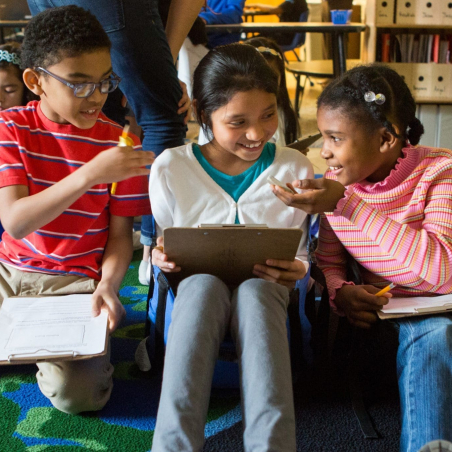Data 101
Data is one of the most powerful tools to inform, engage, and create opportunities for individuals along their journeys through education and into the workforce.
Here are all the resources you need to understand why data is a critical tool for supporting individuals, families, educators, and communities.

What is Education and Workforce Data?
Education and workforce data is information about individuals, groups, and entire populations across the P–20W spectrum, from early education through K–12, postsecondary, and workforce. From course access and attendance to performance data, postsecondary enrollment rates, wage data, and hiring rates, education and workforce data includes any information that can be used to support individuals throughout their education and workforce journeys.
Who Uses Education and Workforce Data?
Individuals, families, educators, communities, and policymakers need secure access to data to make decisions to meet education and career goals.
What is Responsible Data Use?
All education and workforce data collected is regulated by federal and state privacy laws and local policies. Responsible data use is when decisionmakers collect the data they need—and nothing more—and use it to support individuals.
Frequently Asked Questions about Education Data
Our FAQ page dives deeper into questions you may have about data, why it matters, and how it is and isn’t used.
Education and workforce data is any information that can be used to help individuals achieve their education and workforce goals. People often associate data first with test scores; yet those are just one of the many types of data that support individuals in their decisionmaking. Other examples include student background and demographics, enrollment and attendance, performance and growth, staff and facilities, postsecondary readiness and success, workforce outcomes, and more. Read more about data here.
Data works for individuals when it empowers them to make decisions about their futures. Key people—like families, educators, and career counselors—also need timely, easy-to-understand information that they can use to support individuals in their decisionmaking. Isolated data points don’t provide a full picture, but when data comes together—under requirements like privacy and security—it can help people support all individuals to achieve their unique goals.
All states have policies that determine which stakeholders, from teachers to state officials, have access to individual-level data. Usually only those who interact with students, such as teachers and families, are allowed to see personal information. Others can access aggregate, de-identified data that enables them to better develop, implement, and evaluate policies and programs. The federal government does not have—and is legally barred from creating—any database of K–12 student-level data. Read more about who uses education data.
The Data Quality Campaign (DQC) does not collect data of any kind, including individual-level data. DQC is an advocacy organization that provides policy recommendations and champions policies and practices that make data work for individuals throughout their education and workforce journeys. DQC receives no government funding and is supported entirely by philanthropic grants and contributions. Read more about our work.
Our Work
We envision a world where data is used to drive systemic change, economic mobility, and student success.
About Us
We advocate to change the role of data to ensure that data works for everyone navigating their education and workforce journeys.

